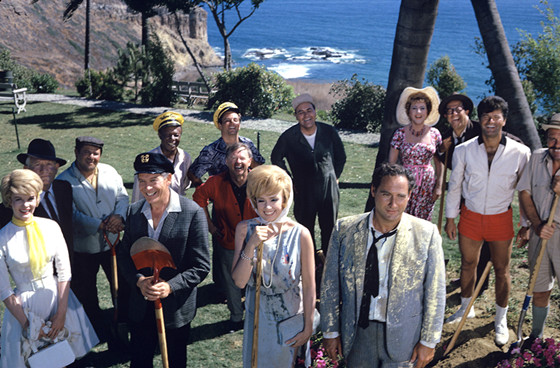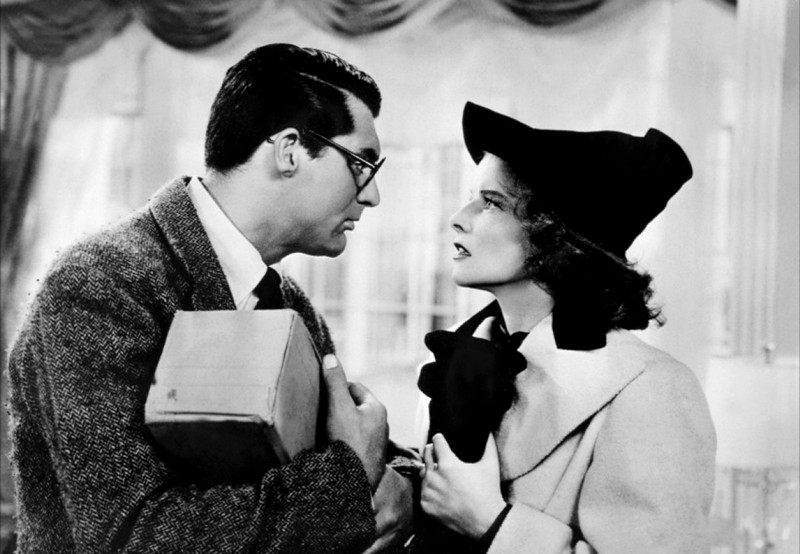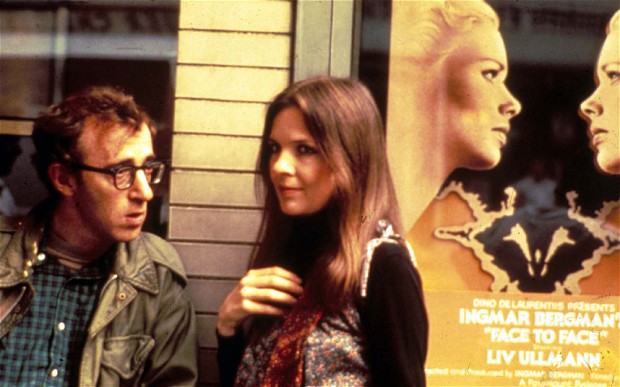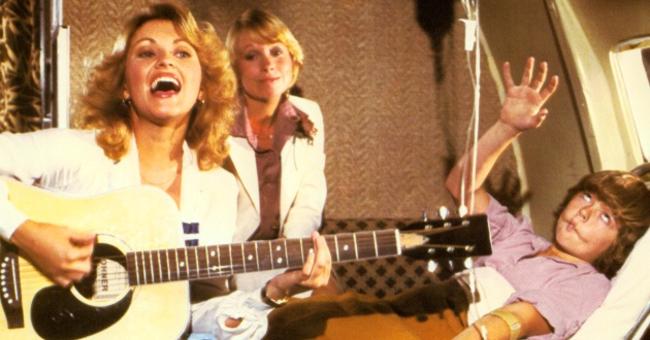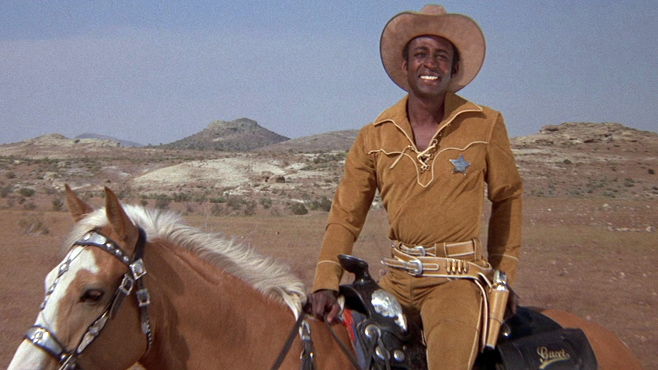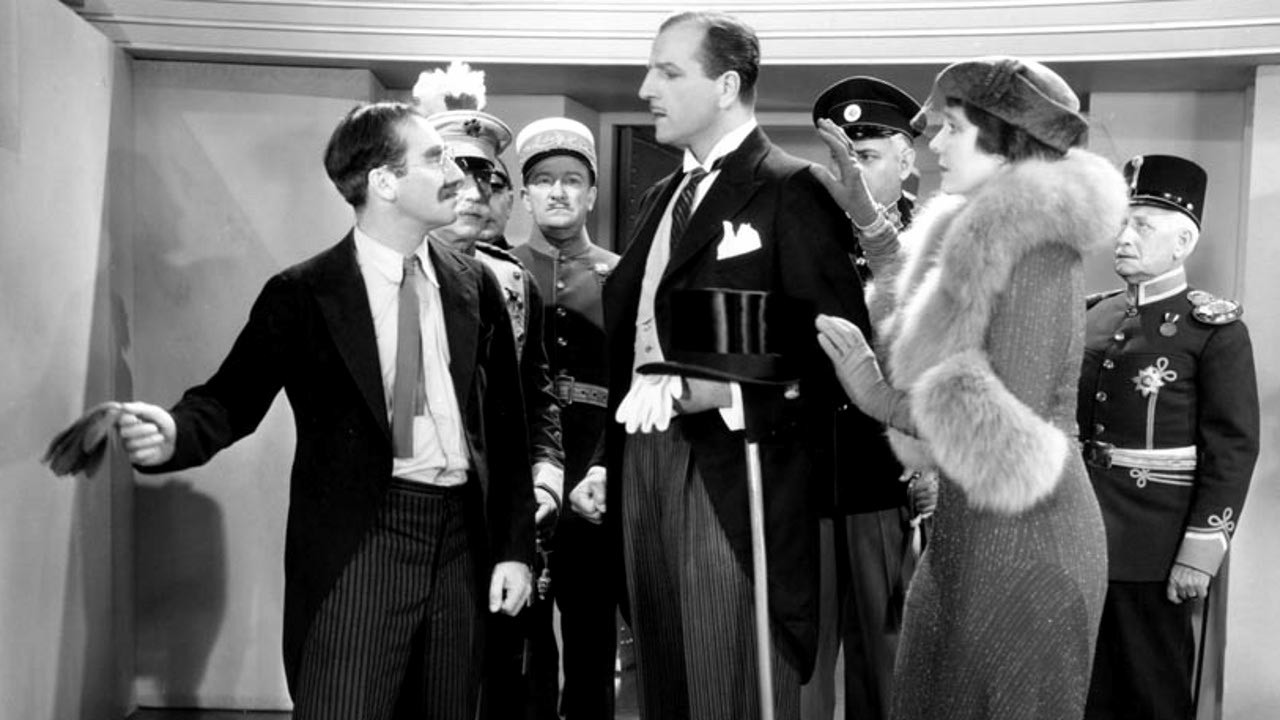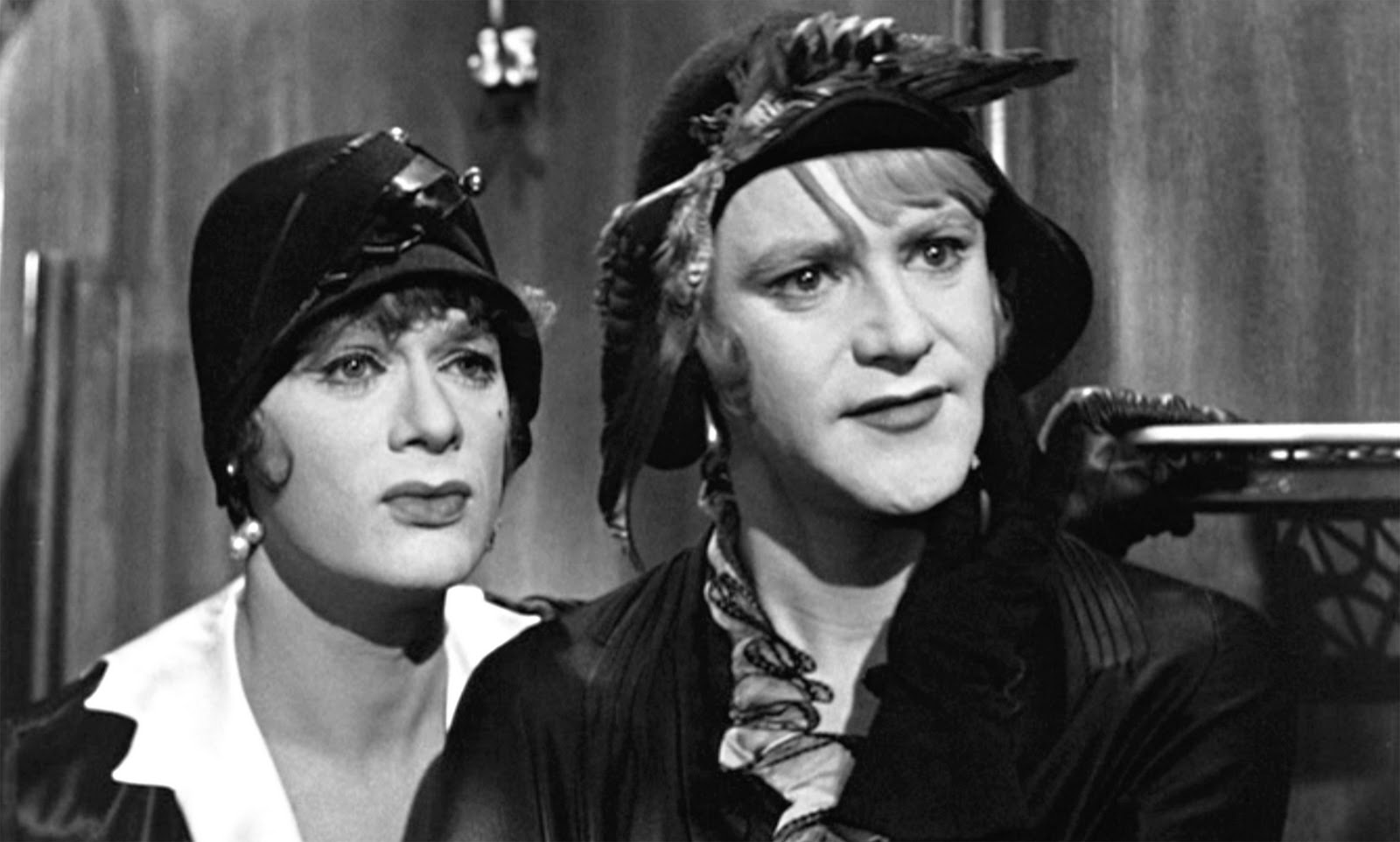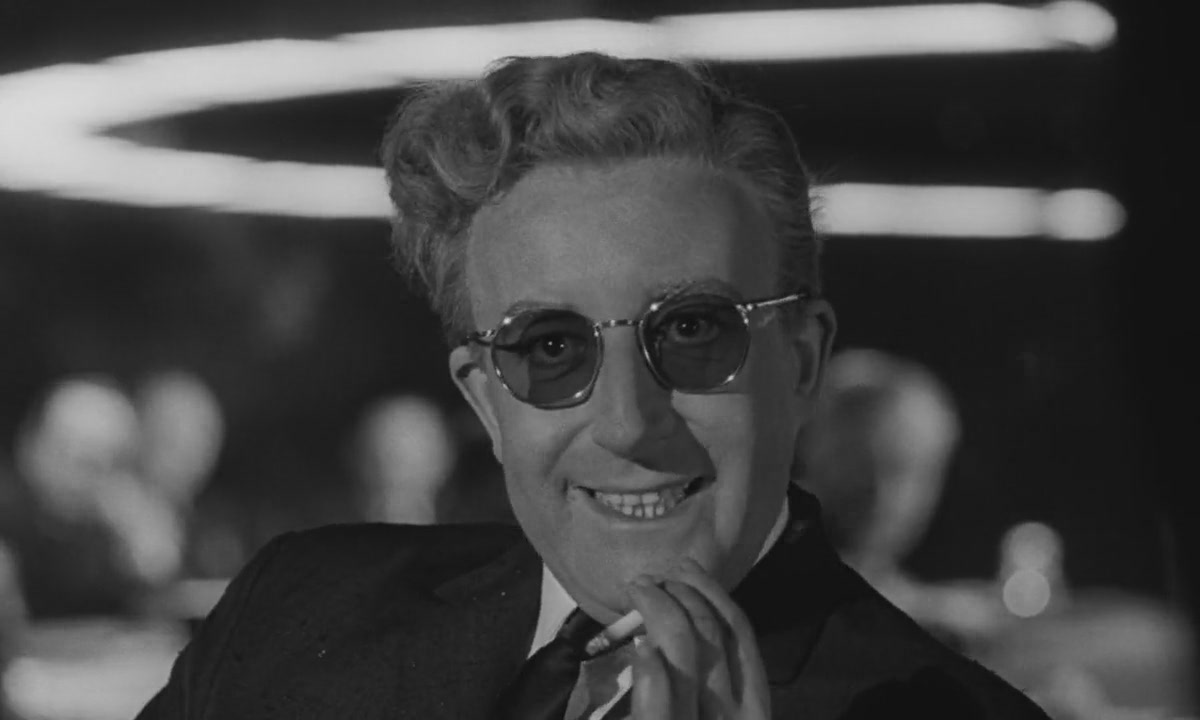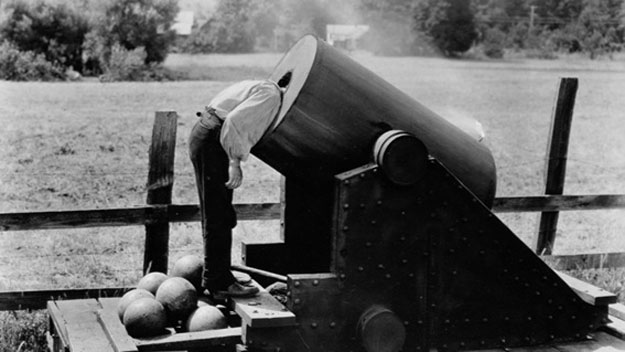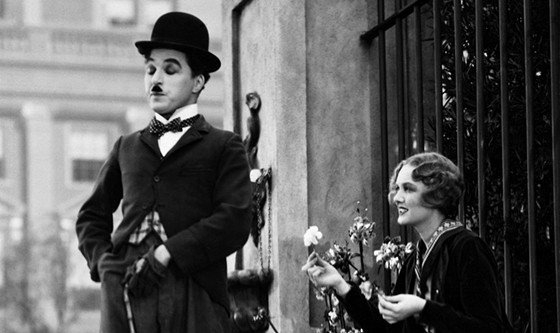10. It’s a Mad, Mad, Mad, Mad World (1963) Dir. Stanley Kramer
This is surely the Ben-Hur of the comedy genre. In 1963, Stanley Kramer, together with writers William and Tania Rose (the three would work again in the classic Guess Who’s Coming to Dinner), created the most epic comedy in American cinema; with a running time of 161 minutes (210 minutes in the original cut), It’s a Mad, Mad, Mad, Mad World might be also called “the comic Godfather”.
Boasting not only a super production with a budget of $9.4 million, a great screenplay and one of the most renowned American film directors in control, this film also features great names of comedy in an ensemble cast: Jonathan Winters, Buddy Hackett, Sid Caesar, Milton Berle, Dick Shawn, Phil Silvers and Terry-Thomas, to name only part of the main cast!
“Smiler” Grogan (Jimmy Durante) is finally free after 15 years in jail and, upon speeding on a mountainous road to Santa Rosita Beach State Park, California, drives his car off a cliff and crashes. Five drivers (Winters, Caesar, Mickey Rooney, Hackett and Berle) pull over to help Grogan, who, just before dying, tells them about his fortune buried in Santa Rosita.
The men start an insane race to catch the money before the others and, along the way, more people get involved and are equally interested in seizing Smiler’s $350,000 dollars, including Captain T.G. Culpeper (Spencer Tracy), who has spent years trying to find Grogan’s stolen money so he can retire from the police force with honor for solving the case.
It features cameo appearances from: Jack Benny, Joe E. Brown, Marvin Kaplan, Buster Keaton, Don Knotts, Charles Lane, Jerry Lewis, Carl Reiner, Arnold Stang, The Three Stooges and several others actors and comedians. Ethel Merman plays Mrs. Marcus, Berle’s character’s annoying mother-in-law; meanwhile, Peter Falk has a supporting role as a cab driver.
It’s the kind of film that looks like a great event. This is an epic masterpiece, a real feel good movie from the ‘60s and a must-see for cinema fans.
Acclaimed by critics and enormously successful at the box office, Kramer’s film became the third-highest-grossing film of 1963, beating movies like Dr. No, The Great Escape and 8½ and losing only to ‘How the West Was Won’ in second and ‘Cleopatra’ in first place.
This epic won the Academy Award for Best Sound Editing and was nominated for Best Cinematography, Editing, Sound Recording, Original Score and Best Original Song.
9. Bringing Up Baby (1938) Dir. Howard Hawks
This film is a great example of the screwball movies made in the golden years of Hollywood. Written by Dudley Nichols and Hagar Wilde and directed by Howard Hawks, the film tells the story of David Huxley (Cary Grant), a paleontologist with an impending marriage to a stern woman (Virginia Walker) who goes to a golf course with the intent to please the wealthy Elizabeth Random (May Robson), who is thinking of donating a sum of $1 million to David’s museum.
But he meets Susan Vance (Katharine Hepburn), the young and free-spirited niece of Mrs. Random. Susan falls in love with David and tries everything she can to have him, transforming his life in a series of mishaps. Despite being a box office flop at the time, Bringing Up Baby became considered one of the all-time best comedy films and was selected for the Library of Congress in 1990.
Bringing Up Baby is a true proof of genius comedic writing in classic cinema and probably the funniest romantic comedy produced in the 30s.
8. Annie Hall (1977) Dir. Woody Allen
The most well-remembered work by Allen, Annie Hall earned him two Academy Awards (Best Director and Best Original Screenplay – co-written with Marshall Brickman). A proof that comedy is also a study of life, the film certainly shows enough material for a thoughtful discussion: love, sex, Jewish culture and identity, psychology and human relationships.
It is the turning point in Woody’s career, when he moved to a more serious tone of comedy that was different from his previous farces and absurdist, slapstick works but did not abandon his usual persona and themes.
Alvy Singer (Allen) is a neurotic, middle-aged comedian who falls in love with Annie Hall (Diane Keaton), an eccentric amateur night club singer, and they begin a romance. One year later, after their relationship over, Alvy tries to understand why it didn’t work out, analyzing his entire life since his childhood, including his past relationships, comic career and his present life.
The screenplay is a little bit autobiographical, with several similarities between the director and Alvy. Diane Keaton’s nickname was ‘Annie’ and her real surname is ‘Hall’ (Woody wrote the role especially for her), and Keaton was romantically involved with Allen at the time. They had made three film before Annie Hall: Play It Again, Sam (1972), Sleeper (1973) and Love and Death (1975).
The film’s cinematographer was Gordon Willis, “The Prince of Darkness”, famous for his work on The Godfather and other dramatic features; he once said that the Annie Hall was his “… first step toward maturity in some way in making films.” He worked again with Allen in Interiors (1978), Manhattan (1979), Stardust Memories (1980), Zelig (1983), Broadway Danny Rose (1984) and The Purple Rose of Cairo (1985).
7. Airplane! (1980) Dir. David Zucker, Jim Abrahams and Jerry Zucker
You just can’t write a list about comedy films without mentioning Airplane!, a true milestone in comedy history. It was written and directed by the ZAZ team (Zucker, Abrahams and Zucker) a filmmaking trio that would made other great movies like Top Secret (1984), Ruthless People (1986) and The Naked Gun series (David would direct the first two pictures solo, with Jim and Jerry co-writing the first entry in the series).
This classic satire is a parody of disaster movies like the Airport series and especially of Zero Hour! (1957), which provides the basis for Airplane!’s screenplay.
Ted Striker (Robert Hays) is a traumatized, alcoholic ex-war pilot and taxi driver trying to save his relationship with his longtime girlfriend Elaine Dickinson (Julie Hagerty), a flight attendant who is leaving him. Hoping to get her back, Striker boards a commercial flight on which Elaine is serving.
But several passengers and the crew, including pilot Clarence Oveur (Peter Graves) and co-pilot Roger Murdock (Kareem Abdul-Jabbar), fall ill after food poisoning. Striker is the only passenger capable of flying the plane, but he has not yet overcome his war trauma. Dr. Rumack (the incredible Leslie Nielsen, in a role that proved a crucial turning point in his career) tries helping the ex-pilot to overcome his fears.
The cast stars actors who had never done comedy before, including Robert Stack, Leslie Nielsen, Lloyd Bridges and Peter Graves in a casting decision that the ZAZ team found much funnier than comic actors performing the roles. Nielsen and Bridges reinvent their careers after Airplane!, performing more comedic parts in several films.
Airplane! was highly acclaimed, considered one of the best films of 1980, and is still remarkable for its quotable lines, puns, visual gags, wit and surrealist humor. The film is not only terribly funny and unforgettable material, but it is also an inspiration for comedy writers everywhere.
6. Blazing Saddles (1974) Dir. Mel Brooks
This tale, set in 1874, of a black sheriff called Bart (the great Cleavon Little) who takes care of a racist little town, Rock Ridge, with the help of a drunken gunslinger (another great comedy actor, Gene Wilder) is surely an unforgettable Mel Brooks film.
It wasn’t so well received at 1974, but it is now universally considered a truly classic cult comedy. The screenplay was created by the elite names in comedy: Brooks, Andrew Bergman, Richard Pryor, Norman Steinberg and Al Uger.
Blazing Saddles is another example of an energetic, groundbreaking milestone of a film. Its madcap story is bound to grab its audience and keep it laughing for the full 95 minutes.
5. Duck Soup (1933) Dir. Leo McCarey
The Marx Brothers’ anarchic style of comedy was a very strong influence in ‘70s and ‘80s comedic films. Duck Soup is their most remarkable picture and showcases the brothers’ unique brand of humor.
Rufus T. Firefly (Groucho Marx) is the new president of Freedonia, a small country in a state of financial crisis. The only reason he got the job is that Mrs. Teasdale (Margaret Dumont), the widow of the former president, requested it. The situation starts to get tense when Trentino, the ambassador from neighboring Sylvania, starts to compete with Firefly to get his hands on the Teasdale fortune.
Duck Soup is full of unforgettable scenes and jokes. If you’re a big fan of comic stars and films, you definitely must see this picture.
4. Some Like It Hot (1959) Dir. Billy Wilder
When a saxophone player, Joe (Tony Curtis), and his double bass player friend Jerry (Jack Lemmon) need to run for their lives after witnessing a mob killing, the only way to save themselves is by pretending to be Josephine and Daphne, two girls in an all-women band going to Miami.
But things take a turn for the worse when they both fall in love by the band’s vocalist and ukulele player Sugar “Kane” (Marilyn Monroe), and they soon run into the gangsters once again.
This film has Lemmon at his first best comic role; meanwhile, Curtis and Monroe display their incredible talents for comedy, and Joe E. Brown’s iconic character and dialogue are just a few things that make this picture an incredible movie experience.
Wilder’s film was nominated to the Golden Lion in Venice Film Festival and is listed as the best American comedy in the AFI list.
3. Dr. Strangelove or: How I Learned to Stop Worrying and Love the Bomb (1964) Dir. Stanley Kubrick
Kubrick’s first comedy is, without doubt, one of his best films. But the other great hero in this black comedy masterpiece is Peter Sellers, who stars in multiples roles. The screenplay is based on the 1958 thriller novel Red Alert (a.k.a. Two Hours to Doom) by Peter Bryant.
Kubrick read the book and, in collaboration with the author, wrote a script for a drama based on Red Alert; later he began to see humor in the idea. Satirist Terry Southern started writing the film with George and Kubrick, and the rest is history.
General Jack D. Ripper (Sterling Hayden) grows paranoid and orders Captain Lionel Mandrake (Peter Sellers) an alert to attack the Soviet Union, starting a nuclear war. All American army aircrafts then flies direct to the soviet state. But later Mandrake finds out that the Pentagon issued no war order and faces Ripper, asking him to retract his order.
Meanwhile President Merkin Muffley (Peter Sellers again), General Buck Turgidson (George C. Scott) and several other officials try stop the attack and avoid triggering the Soviet Union’s ‘doomsday machine’, a device consisting of numerous cobalt bombs that will detonate if a nuclear attack strikes the Soviets.
Sellers also plays the title character: Dr. Strangelove, an ex-Nazi scientist who now is working for the president of the U.S. (He was nominated for an Academy Award for Best Actor for his three roles.)
In the same year, another film about nuclear war with an identical plot was released: Fail-Safe by Sidney Lumet, which was based on the 1962 novel of the same name by Eugene Burdick and Harvey Wheeler but was much more similar to Red Alert. Despite critical praise, Fail-Safe performed poorly in the box office. Dr. Strangelove, on the other hand, was successful with both the critics and the public.
All the while, Kubrick shows an amazing style of filmmaking and writing (together with Southern and George) and Sellers employs a unique presentation of acting, comedy and improvisation. Dr. Strangelove surely displays some of the finest black comedic satire ever produced.
2. The General (1926) Dir. Buster Keaton and Clyde Bruckman
One of Keaton’s best works tells the story of Johnnie (Keaton), who loves both his locomotive and his fiancée (Marion Mack). He is rejected from service in the American Civil War because his current job as an engineer is too important. But when Marion is taken prisoner by the Union, Johnnie tries to save his fiancée and, at the same time, win the battle.
Based on The Great Locomotive Chase by William Pittenger, The General was received very poorly by both critics and general audiences, resulting in Keaton losing his creative control over subsequent films. Years later, his masterpiece is considered one of the best films in cinema history.
The best comedy-action train chase until the Arthur Hiller’s awesome Silver Streak (1976). A classic, breathtaking, jaw-dropping little jewel.
1. City Lights (1931) Dir. Charlie Chaplin
Chaplin’s famous Tramp falls in love with a beautiful blind flower girl (Virginia Cherrill) and vows to do anything for pay an operation that will finally allow her to see.
City Lights was highly successful in the box office and one of Chaplin’s finest-ever films. Albert Einstein attended the premiere with his wife.
Sweet, beautiful, touching and of course very funny, this great film is a wonderful masterpiece. It also became one of the favorite films of Orson Welles and Stanley Kubrick.
Author Bio: Lucas Martins is a comedian, comedy writer, screenwriter, director, producer, ninja, guru, exorcist, stripper, Fame’s forgotten cast member and bodybuilder. He’s a huge fan of cinema and writes several things when he is not busy being lazy.
